
The English Bulldog is a beloved breed known for its unique appearance and affectionate nature. Their short, easy-to-maintain coats require minimal grooming.
These dogs are relatively small in size, typically weighing between 40-55 pounds and standing 10-14 inches tall at the shoulder. They have a sturdy build and a distinctive "bulging" face.
English Bulldogs are prone to breathing difficulties due to their flat face and can be sensitive to heat and humidity. This means they require regular breaks and shade to prevent overheating.
Their calm and gentle nature makes them an excellent choice for families with children, as they are patient and even-tempered.
History and Origins
The English Bulldog has a rich history that's fascinating to explore. The breed's early days were quite different from what we know today.
The English Bulldog's original purpose was bull holding, a legitimate part of the butcher's business in Britain. Unfortunately, this led to the cruel sport of bull baiting.
The breed's function essentially ceased when these sports were outlawed in Britain. The Bulldog eventually developed into a shorter, squattier version of its progenitors.
The English Bulldog was recognized by the United Kennel Club in 1935, marking an important milestone in the breed's history.
Physical Characteristics
The English Bulldog's physical characteristics are truly unique. They have a short, thick neck that's deep, strong, and well-arched, with moderately loose skin forming a dewlap on each side from the lower jaw to the chest.
Their shoulders are broad and muscular, providing stability and great power. In fact, they're so broad that they appear to be "tacked on" to the body.
The English Bulldog's tail is short, set low, and has a thick root, a decided downward carriage, and a fine tip. It may be straight or "screwed", but never curved or curly.
Their coat is short, flat, and sleek, with colors of red, fawn, white, brindle, and piebald. They typically weigh between 40 to 55 pounds, with males weighing slightly more than females.
Appearance
The Bulldog's appearance is a unique blend of characteristics that make them instantly recognizable. Their wide heads and shoulders are a hallmark of the breed.
Their heads are broad and square, with a short muzzle that's turned slightly upward. Jaws are broad and very square, with a distinctive "chops" feature where the under lip completely overhangs the lower jaw.
Discover more: Dogs Breeds That Start with B
The muzzle is deep from the corner of the eye to the corner of the mouth, and the distance from the bottom of the stop to the tip of the nose should not be less than the distance from the tip of the nose to the edge of the under lip.
Their eyes are round, black, and wide-set, and they have a short, flat, and sleek coat that comes in a variety of colors including red, fawn, white, brindle, and piebald.
Bulldogs have a distinctive underbite with an upturned jaw, and their teeth are large and strong, but not visible when the mouth is closed.
Eyes
The eyes of a bulldog are quite a distinctive feature, with very dark eyes that are almost black in color. They are round and moderate in size, never being sunken or bulging.
Viewed from the front, the eyes are situated low down in the skull, well away from the ears. They are set in the front of the head and are wide apart but with their outer corners within the outline of the cheek.
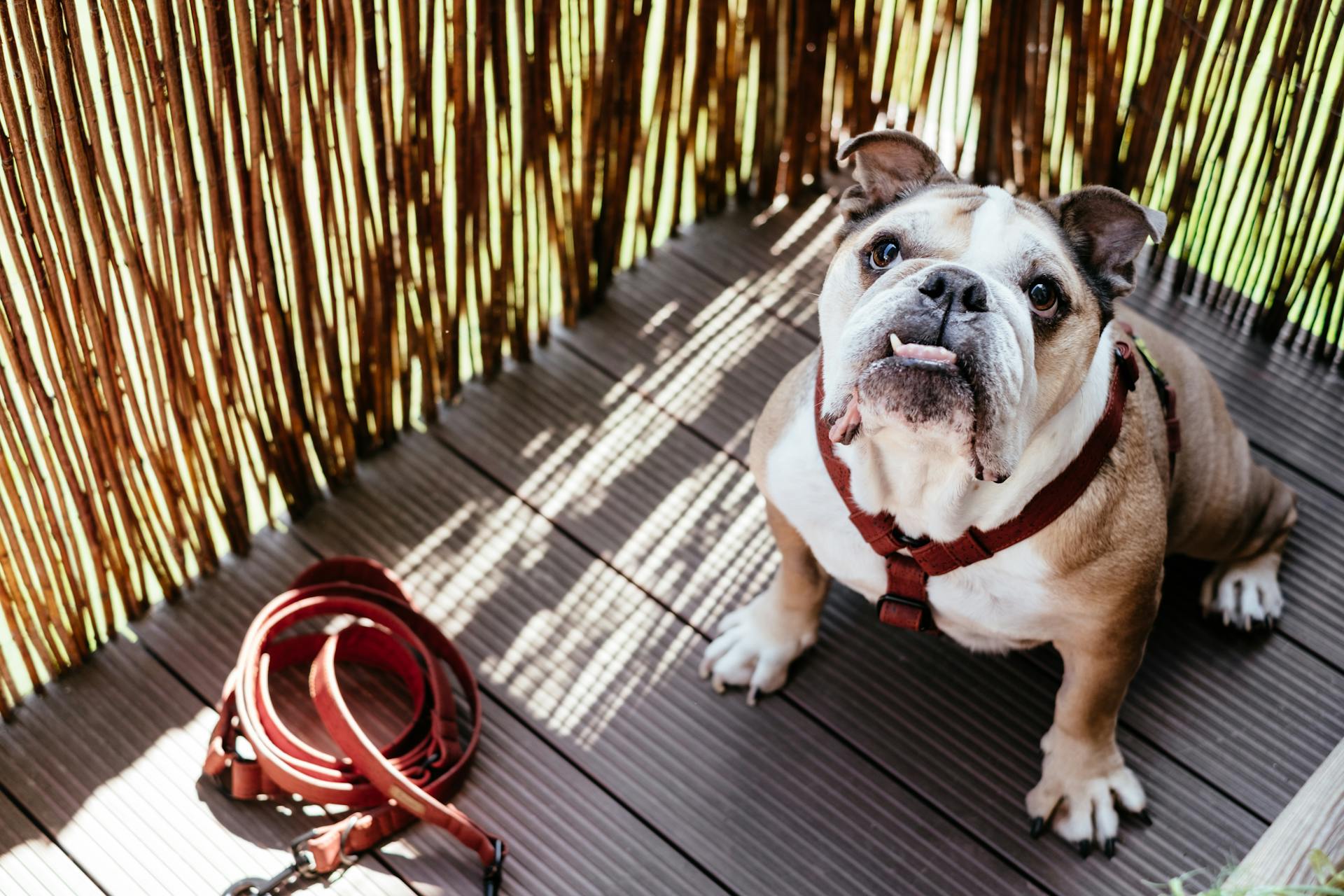
The eyes and the stop are set in the same straight line, which is quite unique. This straight line is at right angles to the furrow, adding to the bulldog's distinctive appearance.
Bulldogs have round, black, wide-set eyes that are free from obvious eye problems. This means they don't have issues like entropion, cherry eye, or excessive amounts of loose skin around the eyes.
In fact, bulldogs have thick folds of skin on the brow, which can sometimes be mistaken for loose skin around the eyes. However, this is a normal characteristic of the breed.
The eyes of a bulldog should show no white when looking directly forward, which is a key characteristic of the breed. This is due to the way the lids cover the white of the eyeball.
Bulldogs come in a variety of colors, but their eyes should always be a very dark color, almost black.
Intriguing read: Best All around Dog Breed
Weight
When it comes to maintaining a healthy weight, it's essential to keep in mind that dogs should be fit and without excess weight.
Dogs should be within a specific weight range to be considered healthy. For mature males, this range is between 50 to 55 pounds.
Mature females should weigh between 45 to 50 pounds. This is crucial for their overall health and well-being.
Exceeding these weight ranges can lead to serious faults. Males over 55 pounds and females over 50 pounds are considered unacceptable.
Take a look at this: 50 Breeds of Dogs
Body and Movement
The body of a show English Bulldog is a key area of focus for breeders and owners alike. The body should be moderately short and well-knit, with stout limbs and a deep chest.
A deep chest is crucial, as it allows for a prominent forechest and a well-muscled body. The brisket and body should be capacious, and the chest should be very deep and well let down between the front legs.
The topline is a distinguishing characteristic of the breed, with a slight fall off behind the shoulders to the beginning of the back, which is the lowest part of the entire topline. This then rises to the loin, which is higher than the shoulders.
The movement and carriage of a show English Bulldog are also distinctive to the breed. The breed should have a characteristic roll to the gait, allowing for effortless movement without pounding the front assembly on the floor.
The movement should be somewhat constrained, with short, quick steps on the tips of the toes. The rear feet should appear to skim the ground, and the body weight should be transferred from side to side creating the distinctive Bulldog roll.
Body
The body of the English Bulldog is moderately short and well-knit, with stout limbs and a muscular build. This sturdy physique is essential for the breed's athletic ability.
A deep and well-let-down chest is a hallmark of the English Bulldog's body, providing ample space for the lungs and heart. This characteristic is particularly noticeable when viewed from the side.
The back is relatively short and strong, broad at the shoulders and narrowing slightly at the loin. This unique shape is a defining feature of the breed.

The topline, or the line from the withers to the base of the tail, is a distinguishing characteristic of the English Bulldog. It features a slight fall off behind the shoulders, followed by a rise to the loin, which is higher than the shoulders.
The croup, or the area at the base of the tail, curves downward to form a slight arch over the loin. This distinctive shape is a key identifier of the breed.
A tucked-up belly is essential for the English Bulldog's athletic ability, allowing for a more efficient and powerful movement.
Gait/Movement
The gait and movement of a breed are crucial aspects to consider. The breed's movement is characterized by a distinctive roll, allowing for effortless movement without straining the front or rear assembly.
The breed's legs are large and muscular, with hindquarters slightly longer than the forelegs, which elevates the loin above the shoulders. This unique structure enables the breed to move with short, quick steps on the tips of the toes.
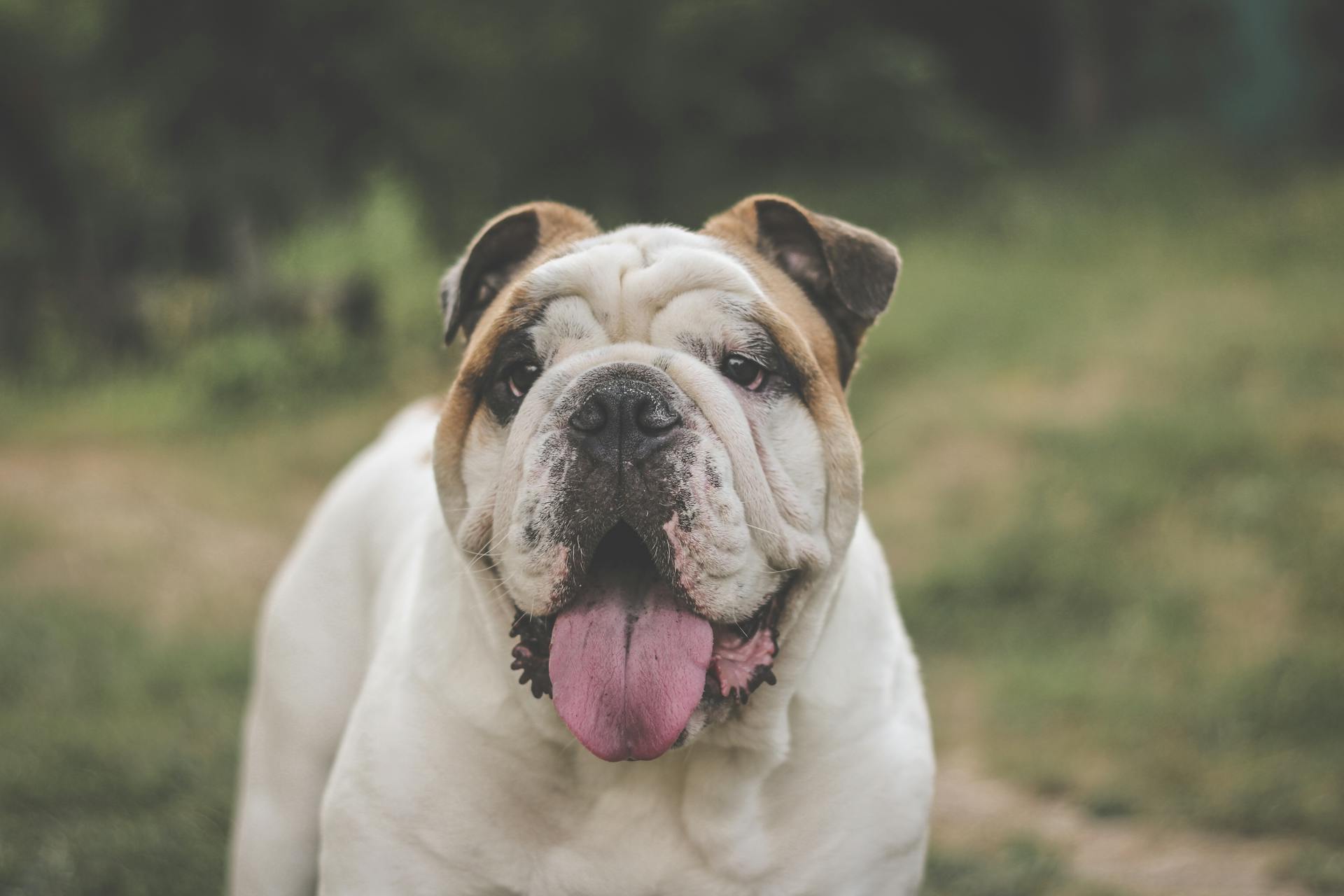
The front feet land just inside the width at the point of the shoulder, while the hind feet appear to skim the ground in a semi-circular motion from inside to out. This movement creates a distinctive Bulldog roll, transferring the body weight from side to side.
The breed's rear feet should not be lifted high, and the movement should be sound and efficient. The correct topline should be maintained when trotting, viewed from the side.
Health and Care
Bulldogs are prone to overheating, especially in warm environments, due to their short muzzle and flattened facial structure. This can lead to life-threatening conditions like brachycephalic syndrome.
To prevent overheating, it's essential to provide air conditioning in the home and car, and travel with fans and ice packs in summer. This will help keep your Bulldog cool and safe.
Bulldogs also require extra care when placing them under anesthesia, as they can't maintain passive respiration. This means taking alternative measures to ensure their breathing rate is maintained during surgery.
Maintaining your Bulldog's coat is relatively simple, requiring only occasional brushing and bathing. However, it's crucial to keep the folds of skin within the wrinkles clean and dry to prevent skin infections and bad odours.
A fresh viewpoint: English Bulldog Overheating Symptoms
Other Conditions
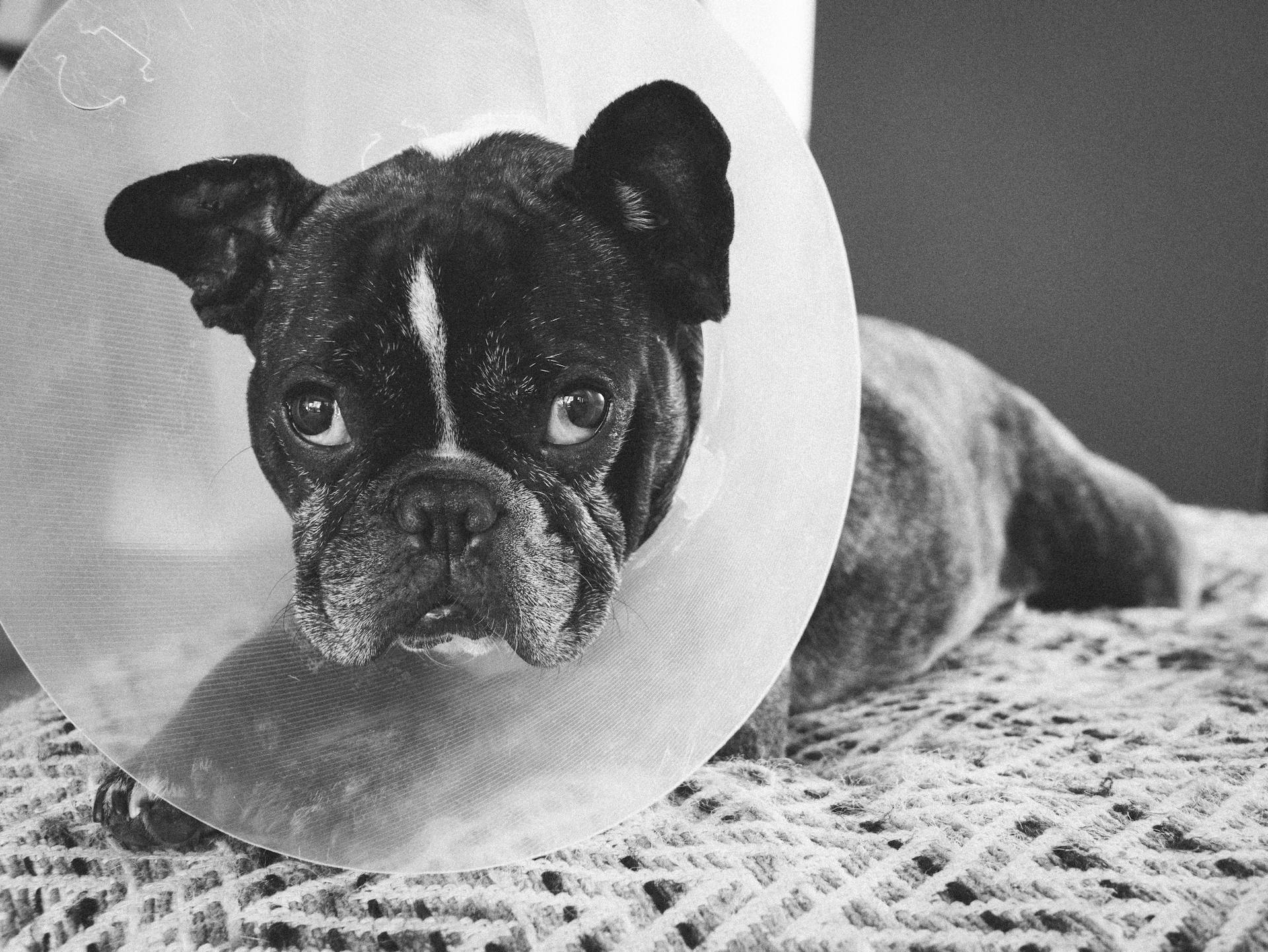
Bulldogs are prone to hip dysplasia, with a staggering 73.9% of 467 tested between 1979 and 2009 being affected.
This is the highest rate amongst all breeds, making hip dysplasia a significant concern for Bulldog owners.
Patellar luxation is another condition that affects Bulldogs, with a nearly three times greater risk than other breeds.
In fact, a study found that 2.9% of all Bulldogs have patellar luxation.
Skin fold dermatitis is also common in Bulldogs, with 17% of those surveyed in a 1963 UK study having the condition.
This is likely due to the breed's characteristic skin folds, which can trap dirt and moisture.
Bulldogs are also predisposed to atopic dermatitis, a condition that can cause skin irritation and itching.
Demodicosis, a skin condition caused by a mite infestation, is more prevalent in Bulldogs than other breeds.
A British study found that 1.5% of Bulldogs had demodicosis, compared to 0.17% of all dogs.
Hiatal hernia is another condition that affects Bulldogs, with the breed being one of the two most commonly affected breeds.
This can lead to breathing problems and other complications, making it essential for Bulldog owners to be aware of this condition.
Here's an interesting read: English Bulldog Hip Dysplasia
Care and Upkeep
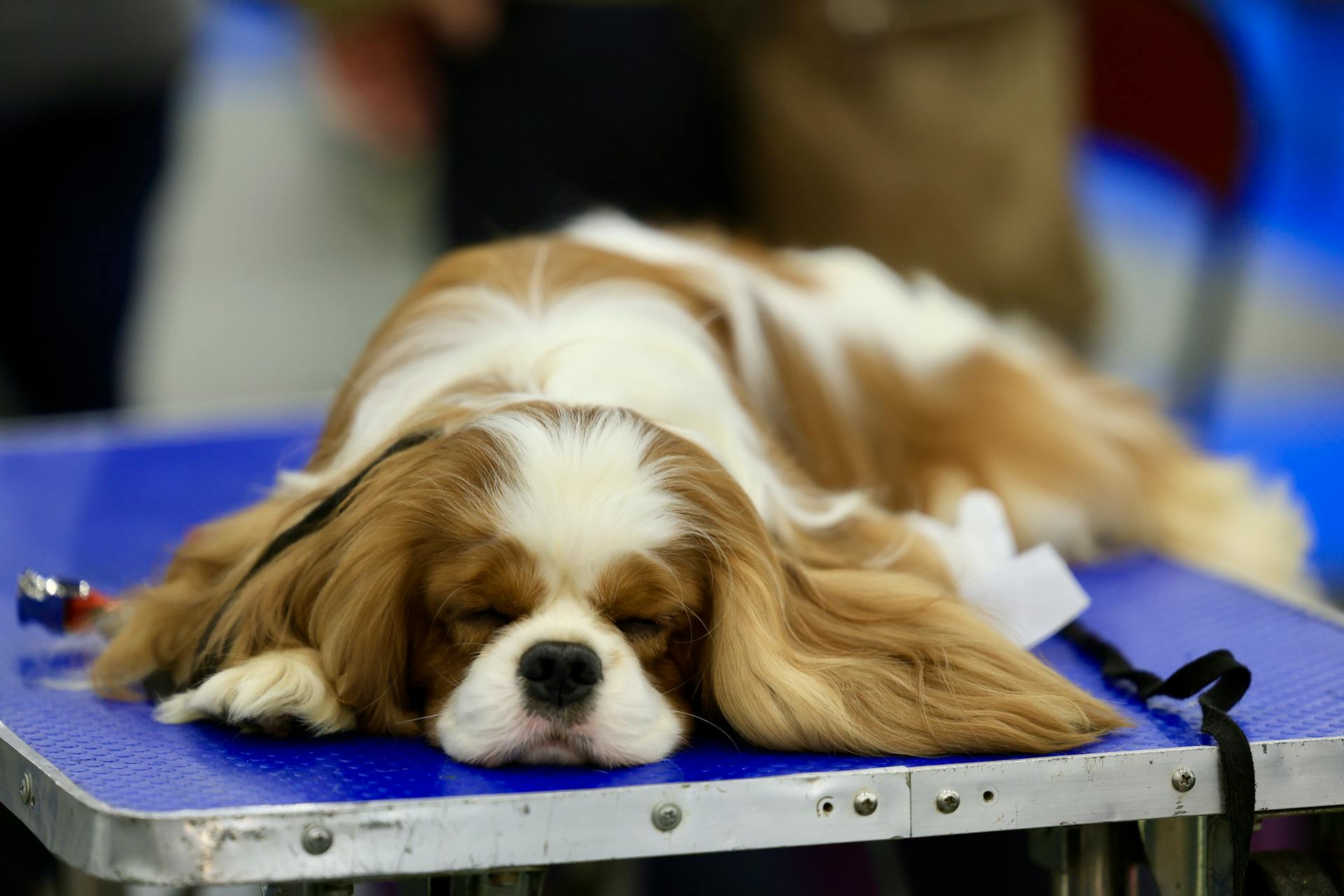
Bulldogs require more care than most breeds due to their short muzzle and flattened facial structure, which makes them prone to health problems.
Their short muzzle can lead to overheating, especially in warm environments and during physical activity. This is because the nostril openings are too small, and the soft palate is elongated, which can obstruct airflow.
Bulldogs can't maintain passive respiration, so special measures are needed when placing them under anesthesia. This is a crucial consideration for any Bulldog owner.
In warm weather, owners should provide air conditioning in the home and car, and travel with fans and ice packs in case of a vehicle breakdown. This can help prevent overheating and heat-related illnesses.
Bulldogs should be monitored near open water, as most can't swim and can drown easily. This is a serious concern that owners need to be aware of.
Maintaining a Bulldog's coat is relatively simple and only requires occasional brushing and bathing. However, their wrinkles need to be kept clean and dry to prevent skin infections and bad odors.
Here's an interesting read: Are Portuguese Water Dogs Good for First Time Owners
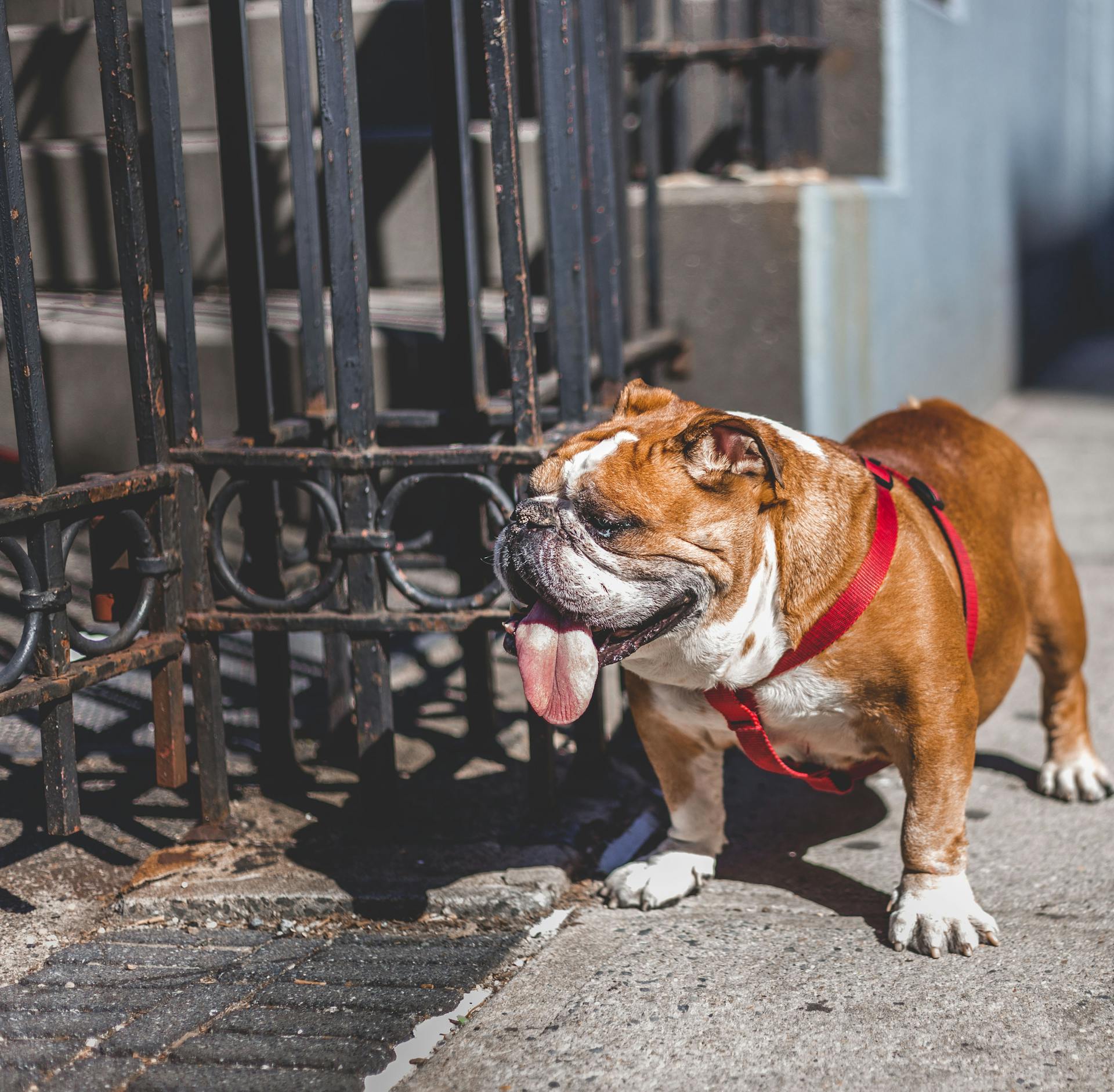
A Bulldog requires little exercise, and a short daily walk or play session in the house or yard may be all that's needed. In warm weather, owners should curtail outings or shift exercise sessions to cooler times of the day.
Bulldogs should be fed a high-quality dog food that's suitable for their size and age. Research has shown that such foods can result in a slower growth rate, which is associated with a reduced risk of hip dysplasia and other joint disorders.
Recommended read: English Bulldog Exercise
Lifespan
Bulldogs have a relatively short lifespan, with a life expectancy of around 9.8 years, as found in a 2024 UK study.
This is lower than the average life expectancy of purebred dogs, which is 12.7 years.
Cardiac-related issues are a leading cause of death in Bulldogs, accounting for 20% of deaths, according to a 2004 UK survey.
Cancer is also a significant concern, responsible for 18% of deaths in the breed.
Old age is another major factor, accounting for 9% of deaths in Bulldogs.
Explore further: English Bulldog Uk
Frequently Asked Questions
Are English Bulldogs good pets?
English Bulldogs make wonderful family pets, loving and gentle with children, but also courageous and alert as watchdogs. They thrive on human attention, making them a great fit for families who want a loyal companion.
Has an English Bulldog ever won the best in show?
Yes, an English Bulldog named Star won Best in Show at the 22nd Annual American Kennel Club National Championship, beating 5,300 other dogs. This historic win marked a notable achievement for the breed.
Featured Images: pexels.com


